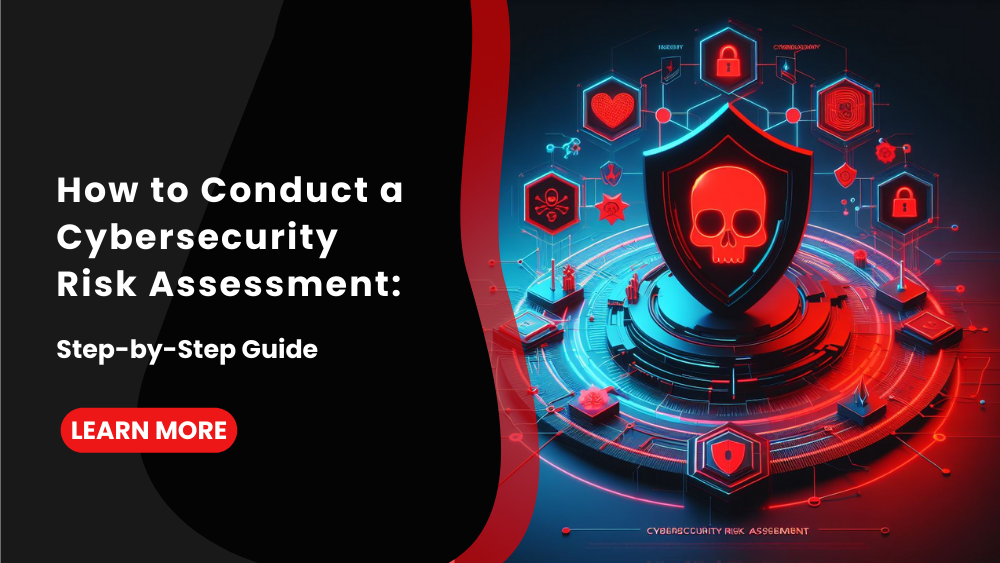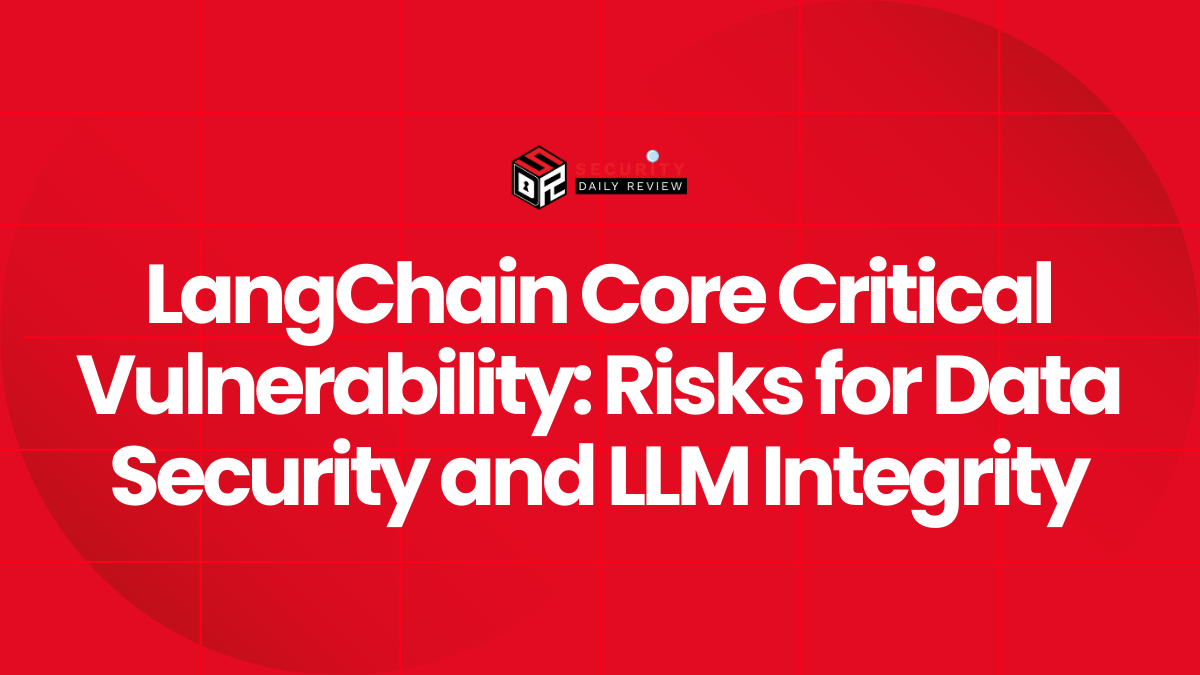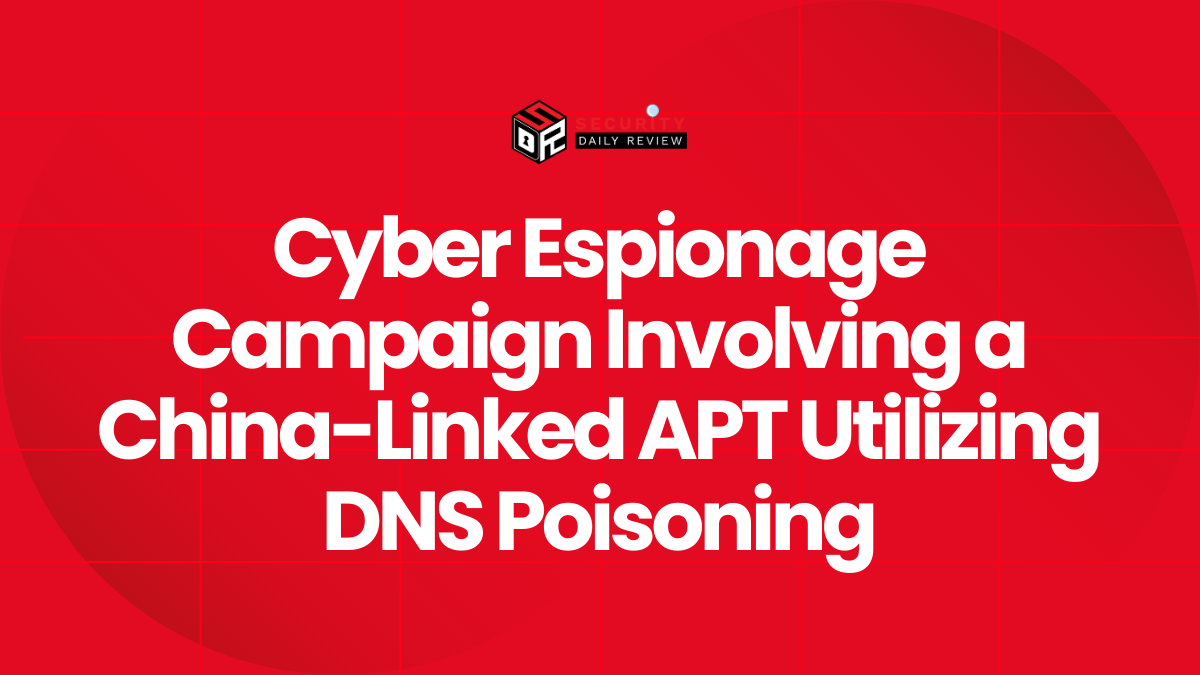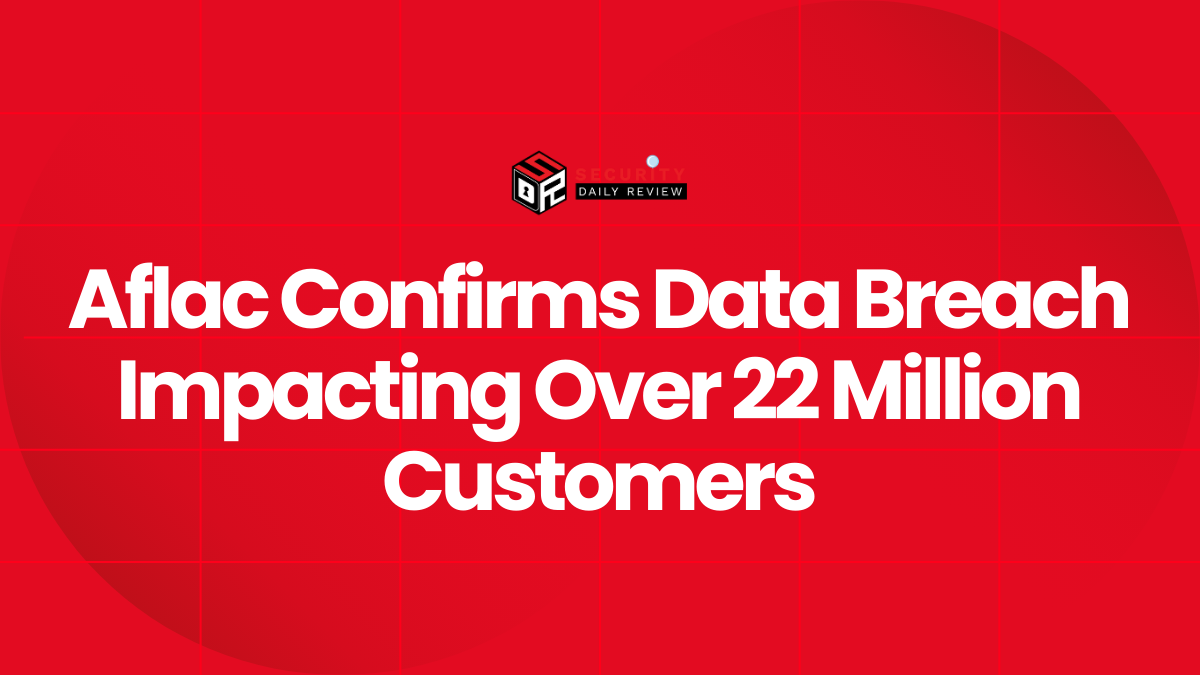In today’s digital landscape, cybersecurity is a top concern for organizations of all sizes. As cyber threats continue to evolve and become more sophisticated, businesses must conduct regular cybersecurity risk assessments.
A cybersecurity risk assessment helps identify vulnerabilities, assess potential risks, and develop strategies to mitigate those risks effectively.
In this comprehensive guide, we will walk you through the step-by-step process of conducting a cybersecurity risk assessment, along with key tools and risk assessment templates to assist you in the process.
Understanding Cybersecurity Risk Assessment

What is Cybersecurity Risk Assessment?
Cybersecurity risk assessment is the process of identifying, analyzing, and evaluating potential threats and vulnerabilities that may impact the confidentiality, integrity, and availability of an organization’s information assets. It involves assessing the likelihood and potential impacts of various cybersecurity risks and determining appropriate risk mitigation strategies.
Why Conduct a Cybersecurity Risk Assessment?
Conducting a cybersecurity risk assessment is vital for organizations to:
Identify vulnerabilities: A risk assessment helps identify potential weaknesses and vulnerabilities in an organization’s information systems, networks, and processes.
Prioritize risks: By assessing the likelihood and impact of different risks, organizations can prioritize their resources and efforts to address the most critical vulnerabilities.
Mitigate risks: A risk assessment provides insights into the effectiveness of existing controls and helps develop strategies to mitigate identified risks.
Compliance requirements: Many industries and regulatory frameworks require organizations to conduct regular risk assessments to ensure compliance with data protection and privacy laws.
Proactive approach to security: Conducting regular risk assessments allows organizations to take a proactive approach to cybersecurity, ensuring they are well-prepared to prevent and respond to potential threats.
What is a Cybersecurity Risk Matrix?
A cybersecurity risk matrix helps organizations assess and prioritize cybersecurity risks based on their potential impact and likelihood. It provides a visual representation of the risks and allows organizations to allocate resources and implement appropriate controls to mitigate those risks.
Components of a Cybersecurity Risk Matrix
A cybersecurity risk matrix typically consists of two main components: the impact and likelihood of a risk. These components are represented on a matrix with multiple levels or categories.
Impact: The impact refers to the potential consequences or harm that may result from a cybersecurity risk. It can include financial loss, reputational damage, operational disruptions, legal and regulatory penalties, and the compromise of sensitive data. The impact levels are usually categorized as low, medium, and high, or assigned numerical values.
Likelihood: The likelihood represents the probability or chance of a cybersecurity risk occurring. It takes into account factors such as the vulnerability of systems or assets, the threat landscape, and the effectiveness of existing controls.
Benefits of a Cybersecurity Risk Matrix
Using a cybersecurity risk matrix offers several benefits to organizations:
Prioritization: The risk matrix helps organizations prioritize their cybersecurity efforts by identifying and focusing on the risks that pose the highest potential impact and likelihood. This allows for the efficient allocation of resources and the implementation of appropriate controls.
Communication: The visual representation of risks in the matrix makes it easier for different stakeholders, including management, IT teams, and board members, to understand and discuss cybersecurity risks. It facilitates clear and effective communication about the organization’s risk profile and the necessary actions to mitigate those risks.
Decision-making: The risk matrix provides a basis for informed decision-making. By considering the potential impact and likelihood of risks, organizations can make strategic decisions on risk acceptance, risk transfer, risk mitigation, or risk avoidance.
Risk Monitoring: The risk matrix serves as a reference point for ongoing risk monitoring and assessment. It allows organizations to track changes in the risk landscape, evaluate the effectiveness of implemented controls, and adjust risk management strategies accordingly.
Limitations of a Cybersecurity Risk Matrix
While a cybersecurity risk matrix is a valuable tool, it does have some limitations:
Subjectivity: Assessing the impact and likelihood of risks involves some degree of subjectivity. Different individuals or teams may have varying opinions or interpretations, which can affect the accuracy and consistency of the risk assessments.
Lack of Precision: The risk matrix provides a high-level overview of risks and their potential impact and likelihood. It does not provide detailed quantitative analysis or precise measurements of risks. Organizations may need to supplement the risk matrix with additional cybersecurity risk assessment tools and methodologies to obtain a more comprehensive understanding of specific risks.
Dynamic Nature of Risks: Cybersecurity risks are constantly evolving, and new threats and vulnerabilities emerge regularly. The risk matrix may not capture the full spectrum of emerging risks or account for rapidly changing risk landscapes. Regular updates and reviews of the risk matrix are necessary to ensure its relevance and effectiveness.
How to Measure Cybersecurity Risk – A Step-by-Step Guide on How to Perform a Cybersecurity Risk Assessment
Step 1: Define the Scope and Objectives
Before starting the risk assessment process, it is essential to define the scope and objectives of the assessment. This involves determining the systems, networks, and assets that will be included in the assessment and establishing the goals and desired outcomes.
Step 2: Identify and Inventory Assets
The next step is to identify and inventory the assets that are relevant to the risk assessment. This includes hardware, software, data, networks, and other resources that need to be protected. Create a comprehensive inventory that outlines the criticality and value of each asset.
Step 3: Identify and Assess Threats
Identify potential threats that could exploit vulnerabilities in the identified assets. This may include external threats such as hackers, malware, and social engineering attacks, as well as internal threats like employee negligence or malicious insiders. Assess the likelihood and potential impact of each threat.
Step 4: Identify and Assess Vulnerabilities
Identify vulnerabilities within the systems and assets that could be exploited by the identified threats. This may include outdated software, weak passwords, misconfigured systems, or lack of employee awareness. Assess the likelihood and potential impact of each vulnerability.
Step 5: Assess the Likelihood and Impact
In this step, assess the likelihood and potential impact of the identified threats exploiting the vulnerabilities. This involves assigning a rating or score to each threat and vulnerability combination based on factors such as the probability of occurrence and the potential impact on the organization.
Step 6: Determine the Risk Level
Based on the likelihood and impact assessments, determine the risk level for each threat and vulnerability combination. This can be done by using a risk matrix or a risk assessment framework. The risk level will help prioritize the risks and focus on the most critical ones.
Step 7: Identify and Implement Risk Mitigation Measures
Once the risks have been prioritized, develop and implement risk mitigation measures. These may include implementing security controls, updating software, enhancing employee training and awareness, or establishing incident response plans. Ensure that the mitigation measures align with the risk level and are feasible within the organization’s resources.
Step 8: Monitor and Review
Cybersecurity risks are dynamic and constantly evolving. It is crucial to continuously monitor and review the effectiveness of the implemented risk mitigation measures. Regularly assess the changing threat landscape, update the risk assessment, and make necessary adjustments to the mitigation strategies.
Tools and Templates for Cybersecurity Risk Assessment
What is a Cybersecurity Risk Assessment Template?
A cybersecurity risk assessment template provides a structured framework for conducting the assessment. It typically includes sections for defining the scope, identifying assets, assessing threats and vulnerabilities, determining risk levels, and documenting mitigation measures. The template ensures consistency and helps streamline the assessment process.
Customizable Cybersecurity Risk Assessment Template:
Creating a comprehensive cybersecurity risk assessment template involves identifying potential threats, assessing vulnerabilities, and evaluating the impact of risks. Here’s a basic template that you can customize based on your organization’s specific needs:
1. Executive Summary:
- Date:
- Prepared by:
- Overview:
- Brief summary of the purpose and scope of the risk assessment.
- Key findings and recommendations.
2. Introduction:
- Objectives:
- Clearly state the goals and objectives of the risk assessment.
- Scope:
- Define the scope of the assessment, including the systems, assets, and processes considered.
3. Asset Inventory:
- Critical Assets:
- Identify and list the organization’s critical assets (e.g., servers, databases, intellectual property).
- Data Classification:
- Classify data based on sensitivity (confidential, internal use, public).
4. Threat Identification:
- External Threats:
- List potential external threats (e.g., hackers, malware, phishing).
- Internal Threats:
- Identify internal threats (e.g., insider threats, employee errors).
5. Vulnerability Assessment:
- Network Vulnerabilities:
- Identify vulnerabilities in the network infrastructure.
- Application Vulnerabilities:
- Assess vulnerabilities in software applications.
- Physical Security:
- Evaluate physical security measures in place.
6. Risk Analysis:
- Likelihood:
- Assess the likelihood of each threat exploiting vulnerabilities.
- Impact:
- Evaluate the potential impact on confidentiality, integrity, and availability.
7. Risk Prioritization:
- Risk Matrix:
- Use a risk matrix to prioritize risks based on likelihood and impact.
- High-Risk Areas:
- Highlight areas with the highest risks that require immediate attention.
8. Current Controls:
- Security Controls:
- List existing security controls and measures in place.
- Effectiveness:
- Assess the effectiveness of current controls.
9. Gap Analysis:
- Identify Gaps:
- Identify gaps between current controls and required security measures.
- Mitigation Strategies:
- Propose strategies to address identified gaps.
10. Recommendations:
- Security Measures:
- Suggest specific security measures to mitigate identified risks.
- Policy Changes:
- Recommend changes to security policies and procedures.
11. Incident Response Plan:
- Review the Incident Response Plan:
- Assess the effectiveness of the current incident response plan.
- Improvements:
- Suggest improvements or updates to the incident response plan.
12. Compliance:
- Regulatory Compliance:
- Ensure compliance with relevant regulations and standards.
- Legal Implications:
- Address any legal implications of identified risks.
13. Documentation and Reporting:
- Documentation:
- Keep detailed documentation of the risk assessment process.
- Reporting:
- Prepare a detailed report summarizing findings and recommendations.
14. Review and Update:
- Review Schedule:
- Establish a schedule for regular risk assessments.
- Continuous Improvement:
- Plan for continuous improvement based on lessons learned.
This template provides a structured framework for conducting a cybersecurity risk assessment. Customize it according to your organization’s specific environment, industry regulations, and risk tolerance. Regularly review and update the risk assessment to adapt to evolving threats and changes in the IT landscape.
Cybersecurity Risk Assessment Frameworks
Various cybersecurity risk assessment tools are available to assist organizations in the assessment process. These tools automate the collection, analysis, and reporting of risk assessment data, making the process more efficient and accurate.
Some popular cybersecurity risk assessment tools include:
NIST Cybersecurity Framework: The NIST cybersecurity risk assessment template provides a comprehensive framework for assessing and managing cybersecurity risks. The framework includes guidelines, standards, and best practices that organizations can use to evaluate their cybersecurity posture.
FAIR (FactorAnalysis of Information Risk): FAIR is a quantitative cybersecurity risk assessment methodology that helps organizations assess and prioritize cybersecurity risks based on their financial impact. It provides a consistent and objective method for evaluating risks and making informed decisions.
ISO/IEC 27005: ISO/IEC 27005 is an international standard that provides guidelines for conducting information security risk assessments. It outlines the process of identifying risks, assessing their likelihood and impact, and implementing risk mitigation measures.
OpenFAIR: OpenFAIR is an open-source risk analysis methodology that allows organizations to assess and communicate cybersecurity risks in a consistent and standardized manner. It provides a practical and flexible approach to risk assessment.
Popular Risk Management and Vulnerability Assessment Tools

Vulnerability assessment tools help organizations identify and assess vulnerabilities within their systems and networks. These cybersecurity risk assessment tools can scan the organization’s assets for known vulnerabilities and provide reports with recommendations for remediation.
Popular cybersecurity risk management software to scan vulnerabilities include:
Nessus: Nessus is a widely used vulnerability scanner that helps organizations identify vulnerabilities, misconfigurations, and other security issues in their networks and systems. It provides detailed reports and prioritizes vulnerabilities based on their severity.
Qualys: Qualys is a cloud-based vulnerability management platform that offers a suite of tools for vulnerability scanning, patch management, and compliance monitoring. It provides real-time visibility into an organization’s security posture and helps prioritize remediation efforts.
OpenVAS: OpenVAS is an open-source vulnerability scanner that allows organizations to scan their networks and systems for known vulnerabilities. It provides a comprehensive assessment of the organization’s security vulnerabilities and offers recommendations for remediation.
Notable Cybersecurity Risk Assessment Services
Deloitte Cyber Risk Services: Deloitte’s cybersecurity risk assessment services include a detailed review of the information security program, from policies and procedures to technical controls, including people, processes, and technologies.
CyberSecOp Consulting Services: CyberSecOp’s cybersecurity risk assessment services include vulnerability assessment, penetration test assessment, phishing simulation assessment, red team assessment, compliance audit/assessment, white/grey/black-box security assessment, data risk assessment, threat assessment, and bug bounty program assessment services.
Cipher: Cipher provides Managed Security Services, Managed EDR (Early Detection and Response), Red Team Services, Cyber Intelligence Services, Technology Integration, Governance Risk and Governance Compliance Services.
ScienceSoft: ScienceSoft provides Managed Security Services, Penetration Testing, Phishing Attack Simulation, Vulnerability Assessment, Code Review, Red Teaming, Compromise Assessment, Cyber Risk Assessment, Compliance Assessment, SIEM/SOAR Consulting, Application Security Consulting, Cloud Security Consulting, and Security Program Development services.
Kroll Cyber Risk: Kroll’s cybersecurity risk assessment services include a detailed review of the information security program, from policies and procedures to technical controls, including people, processes, and technologies.
Conclusion
Conducting a cybersecurity risk assessment is a critical step in protecting an organization’s information assets from cyber threats.
By following a systematic approach and using the right tools and templates, organizations can identify vulnerabilities, assess risks, and implement effective risk mitigation strategies. Regularly reviewing and updating the risk assessment ensures that the organization remains resilient in the face of evolving cybersecurity threats.
Remember, cybersecurity is an ongoing process, and staying vigilant is key to maintaining a strong and secure digital environment.









